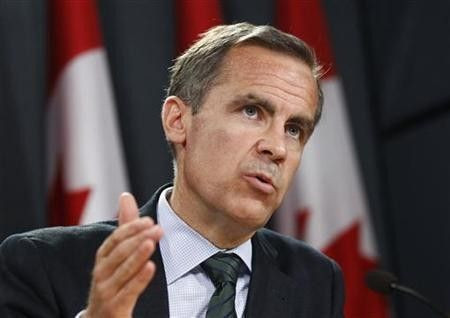Bank of Canada backs away from rate hike option

In a dramatic policy shift, the Bank of Canada said on Wednesday it saw less need to raise interest rates, becoming the latest major central bank to take a more cautious stance about the worsening global economy.
The bank held its overnight rate unchanged at 1 percent, where it has been for the past year, and took its previous talk of a rate hike off the table.
In light of slowing global economic momentum and heightened financial uncertainty, the need to withdraw monetary policy stimulus has diminished, the central bank said in a statement.
In its July interest rate announcement, the bank said stimulus will be withdrawn provided the economy kept growing, leading markets to expect a rate hike later this year.
That forecast looks outdated now, given the European debt crisis, slowing U.S. growth and volatile markets.
Investors were not surprised by the more dovish tone, although many had expected a sharper policy reversal. Most economists still expect the next move in rates to be up rather than down, but it could be a year or more before that happens, and the bank's cautious language left the door open to an eventual move in either direction.
Goldman Sachs this week became the first major financial institution to forecast a Canadian rate cut later this year.
There is really not much hint that the bank is considering cutting rates, but at the same time, they've pretty much put rate hikes firmly on the shelf, said Doug Porter, deputy chief economist at BMO Capital Markets.
TOEING THE INTERNATIONAL LINE
The change of heart brings the Bank of Canada into line with other major central banks ahead of a G7 meeting on Friday where policymakers are expected to commit to keeping monetary stimulus in place. Brazil cut rates on August 31 and the European Central Bank is widely expected to halt its tightening cycle on Thursday, with some investors pricing in a cut in ECB rates later this year.
The U.S. Federal Reserve, taking a leaf out of Canada's mid-recession playbook, has promised to leave interest rates low for a prolonged period.
Yet for some, the Bank of Canada was less dovish than expected.
It still has these lingering elements of the hawkish, said Stewart Hall, currency strategist at RBC Capital Markets.
Most, including ourselves, were looking for more of an overt move to neutrality that would have, in a sense, sidelined any talk of the need to withdraw monetary stimulus.
The Canadian dollar weakened briefly against the U.S. dollar after the Bank of Canada statement, but later strengthened as market players realized the bank wasn't calling for a rate cut. Swap markets pared back expectations for a near-term drop in rates but were still pricing in a cut in early 2012.
The yield on the two-year Canadian government bond, which is especially sensitive to Bank of Canada interest rate moves, rose to 0.905 percent from 0.883 percent just before the statement.
The bank said several of the downside risks it identified in its July Monetary Policy Report had materialized, yet it sees Canadian growth resuming in the rest of 2011 after a second-quarter contraction. Exports will remain a major source of weakness because of soft demand from major trading partners and a strong currency, it said.
Derek Holt, economist at Scotia Capital, said the bank appeared to be over-optimistic on growth, although he still expects the next move on rates to be up.
I think we had a weak economy throughout the first half of the year and there are more considerable question marks about the outlook over the next six to nine months than the bank is letting on, but we'll see, he said.
The Bank of Canada said headline inflation will continue to moderate and core inflation will remain contained, and that overall inflation expectations are well-anchored.
It cited discouraging U.S. economic data, the European sovereign debt crisis and market volatility as the backdrop to its policy shift, noting that U.S. growth will be weaker than previously expected and fiscal and financial strains in Europe could prompt even more severe market dislocations.
Economists and strategists in a Reuters survey released August 31 had expected the bank to stay on the sidelines at least until the second quarter of next year. In July, analysts had predicted a rate hike in the fourth quarter of 2011.
© Copyright Thomson Reuters {{Year}}. All rights reserved.





















